BUILDING A BRAND BY THE COMPANY YOU KEEP
PRESS PLAY>> TO VIEW THIS MONTH’S WELCOME MESSAGE FROM KEN
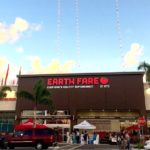 Walking through the crowded aisles at the brand new Earth Fare store that just opened near me last week, I was impressed first by the amount of customers and then by the selection of organic and home grown products that were offered. It reminded me of my first trip to Trader Joe’s several years ago on the west coast or more recently to my initial visit to a Whole Foods in Detroit a few years ago, interesting, exciting, a sense of discovery. Not that we’ll shift our food shopping from our favorite Publix store, but this new store was a refreshing change in the shopping experience. Even though the store’s outdoor sign said it was established in 1975, the concept is new and refreshing and it capitalizes on the major trend in consumer preferences for natural and organic products in an innovative environment.
Walking through the crowded aisles at the brand new Earth Fare store that just opened near me last week, I was impressed first by the amount of customers and then by the selection of organic and home grown products that were offered. It reminded me of my first trip to Trader Joe’s several years ago on the west coast or more recently to my initial visit to a Whole Foods in Detroit a few years ago, interesting, exciting, a sense of discovery. Not that we’ll shift our food shopping from our favorite Publix store, but this new store was a refreshing change in the shopping experience. Even though the store’s outdoor sign said it was established in 1975, the concept is new and refreshing and it capitalizes on the major trend in consumer preferences for natural and organic products in an innovative environment.
I was particularly impressed by the number of branded products lining the shelves and the coolers that I had never heard of before. Food stores have long been the home to Consumer Packaged Goods that have dominated the marketing media in the battle for market share. However, here the selection was based more on innovation and niche product benefits that the customer will seek out once they have loyalty to the store brand and what it stands for. In my branding articles and books, I always stress the need for communicate the products unique value and benefits in order to create a successful brand. However, sometimes you can’t afford the expense necessary to build awareness or be able to communicate your unique selling proposition. That’s when it becomes important to seek an established brand to help your brand by association.
Just as soft drink companies sign long term contracts with fast food restaurants to build their brands, lesser known brands seek preferred status in distribution. Certain wineries seek to be on the wine lists and popular restaurants to build awareness and preference. Electronics companies, like Infinity, supply the multi-media equipment in popular auto models. Bedding companies tie in with major hotel chains to add value to their brand as well as the hotel owner’s. In my drug store days, we sought out the support of Good Housekeeping to put its seal on our private label products to add credibility and value. JetBlue enhanced its service reputation by adding Dunkin Donuts brewed coffee on all their flights. Nike built its brand by sponsoring major sports teams and golfers to insure that their swoosh logo was visible with an implied endorsement.
This is what’s happening in Earth Fare where hundreds of homeopathic drugs and supplements line the shelves with the only sales pitch being “try this because we sell it here. So it must work.” We are reliant on the store to substantiate our choice of certain products. If this brand, that I believe and trust, sells it, then it must be good.
As the brands grow and develop a loyal customer base, the complementary benefits work both ways and the brands continue to grow successfully together.
GREAT BRANDING NEEDS A CHAMPION!
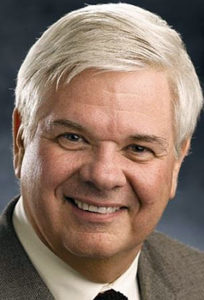 When I started this blog some 12 years ago, my goal was to replicate the many Monday morning quarterback sessions by phone with a select number of my peers in the retail, ad agency, and supplier worlds. Once the Monday am executive meetings were finished, there was always time for a call or two to get their insights on what was happening in our industry. We would talk about a new everyday pricing strategy at Sears, an acquisition by Saks, quarterly results for Walgreens, or what were they thinking with that spot on Super Bowl?
When I started this blog some 12 years ago, my goal was to replicate the many Monday morning quarterback sessions by phone with a select number of my peers in the retail, ad agency, and supplier worlds. Once the Monday am executive meetings were finished, there was always time for a call or two to get their insights on what was happening in our industry. We would talk about a new everyday pricing strategy at Sears, an acquisition by Saks, quarterly results for Walgreens, or what were they thinking with that spot on Super Bowl?
On many of those calls, was my good friend, Ed Carroll, CMO at Boston Store, Carsons, Saks, and BonTon at various times throughout the years. Our conversations were always lively and insightful and there was always a good laugh as well news updates on our similar families. We lost Ed last month after a hard-fought battle with pancreatic cancer and I immediately felt an emptiness after so many conversations and good times. Our industries should also feel an emptiness for a true leader who set the standards high in a retail industry that didn’t always pay attention to branding while searching for the next best promotional event. To pay tribute to this great guy, I think that there are some real parallels to the keys to a successful branding strategy and to what Ed Carrol stood for over four decades in the industry.
Key #1 CREATE A VISION. Ed was always a big picture guy looking beyond the current hot trends to try to predict what was going to effect his company’s business 5 or 10 years down the road. He did this because of his insatiable interest in the industry and trends and his understanding of the various market segments and what was going to happen to his customer bases-whether they were baby boomers or millennials, male or female, one ethnic group or another. He’d always quote a recent article or study that gave some unique insights and then he was able to present it in such a way that it moved from opinion to fact-based predictions. I saw this on a number of the trade association boards that we sat together on over the years. He always had great questions for the presenter and always could start a good, lively conversation when the agenda had hit a lull. Yet, he did all this while still making next week’s 3-Day white Sale more exciting than last weeks.
Key #2 DO THE RESEARCH. Ed Carroll did research that many larger organizations had never even hear of and often knew more about their customers and how they shopped their stores as well as his, than they will ever know in time to make an impactful decision. He wasn’t a numbers guy any more than I was, but he sure knew how to find value that would have an ROI by understanding what those numbers meant and having smart people around who would provide the analysis. In our years on the National Retail Federation (RAMA) board, Ed was a champion to conduct membership studies so we could learn what attendees liked, didn’t like or just what they really wanted to know more about. The result of his dedication led to growth there just as it did at his home store in gaining market share.
Key #3 COMMUNICATE YOUR VALUE WELL. All of this led to some of the best retail advertising in the business. Sure there were daily ROP’s, the weekly inserts, but they were supported by creative executions that reached both the heart and the wallets of their customers. He figured out ways to develop ongoing programs that benefits the communities where the stores were located that continued to be successful even after the promotions had faded away. He always said: “Sometimes you just have to do the right thing!” His soft spoken demeanor belied his passion for excellence and also his creative spark for coming up with really “wow” events and messages. Yet, he was practical and knew that there was an important balance between price promotion and brand development. His presentations at many industry events were always well done, concise, humorous, and dead on with the point he was trying to make.
Key #4 IMPLEMENT YOUR PLAN EFFECTIVELY. With his passion for the preceding steps, Ed was a master planner and his teams reflected that efficiency at all his management positions He clearly knew where the “Desired Future State” was and what they needed to do to get there effectively. He was organized not so much on the details, but more on the key steps that needed to be done and that helped prevent many of the distractions that come into the retail marketing offices on an everyday basis. He always took the helicopter view and could make big things happen with small distractions. Working with him on some media taskforces over the years, his value the groups was always to bring clarity to what needed to be accomplished and insure that it was done before we went out enjoyed some of the fun of those retreats. If someone got off track, he wasn’t afraid to let the meeting organizer know that they missed the point on that one or it would have been better if…
Key #5 LIVE UP TO THE BRAND EVERYDAY. Consistency is the key to a successful retail brand so that whenever a customer comes in your store, you store, its associates, its selection and its service are disappointed that you couldn’t deliver on what your marketing promised. Ed worked as key member of management bring his expertise to everything from Human Resources and Training to Logistics and Supply Chain accounting. As a successful executive, Ed Carroll had a brand to live up and he did that without exception. His relationships with his organization, his agencies and suppliers, his trade organization and his friends, was consistent and without exception that of one who enjoyed his craft, share his expertise, led by example and made life enjoyable.
The industry lost one of its icons last month. I lost a friend and I’ll miss his inspiration more than anything.
BRANDING–DOES SIZE REALLY MATTER?
Driving around Sonoma County again this month, I never cease to be amazed by the number of vineyards that cover the landscape in valleys, hills, and canyons almost everywhere you look. Going up the narrow, winding road to our rental home, I was surprised to find small vineyards with no signs or identifications around every bend and I started to wonder how some of these wine growers and makers survive in this ever-growing competitive industry. One only has to walk through a Total Wine & More super store or even the wine aisle at Publix to see that wine brands far outnumber the brands of cereals or frozen foods that make up so much of the revenue of today’s grocers. In an industry that has been dominated by large wine conglomerates like Diageo, Constellation, The Wine Group, or Gallo who now make up more than half the wine business nationally,
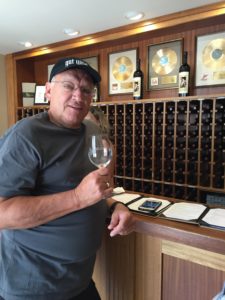 I wondered how do small vintners succeed in gaining shelf space and share of market. I asked Wayne Fieldsa, a small, family-owned Sonoma vineyard owner, who stopped bottling his own wine a few years ago and now supplies grapes to other winemakers, what it takes to succeed in today’s wine market. He conceded that the large companies will continue to grow and acquire small wineries that have developed successful brands just as the major breweries have taken over many craft brewers around the country. However, he said that there still is plenty of room for wines that create a niche for themselves and a brand that is distinguishable. For example, he specialized in Syrah grapes and produced some award-winning varietals that helped gain
I wondered how do small vintners succeed in gaining shelf space and share of market. I asked Wayne Fieldsa, a small, family-owned Sonoma vineyard owner, who stopped bottling his own wine a few years ago and now supplies grapes to other winemakers, what it takes to succeed in today’s wine market. He conceded that the large companies will continue to grow and acquire small wineries that have developed successful brands just as the major breweries have taken over many craft brewers around the country. However, he said that there still is plenty of room for wines that create a niche for themselves and a brand that is distinguishable. For example, he specialized in Syrah grapes and produced some award-winning varietals that helped gain
distribution and loyal customers. One only has to glance at the labels on the endless shelves at the aforementioned retailers to see there are some interesting names and designs on most of the bottles. Yet, there are some that continue to grow by building their brands with more than just a nice tasting room or marketing campaign. Much of it is due to the obsession of the winemaker to produce something unique that their customers want and will go out of their way to keep in their wine coolers at home. Wineries are some of the most successful CRM marketers with their wine clubs and special mailings that keep customers ordering often and in large quantities.
So size isn’t the only factor for success here and it’s not in many other competitive industries. I think about the hamburger shop in a non-descript strip center in my neighborhood. Despite having all of the national hamburger chains within a tenth of a mile of their hidden location, the shop has a loyal family business–built on a brand of fresh beef, grilled to order, with hand-cut fries and fresh fish and chips. The owner runs the place and grills the burgers, too, but understands that his brand is based on the fresh, family-run business catering to quick eat-in or take-out. Another example is a small, family-run investment/wealth management firm tha
t I’ve worked with, who have built a successful business despite offices of all the major investment firms and banks on the same road (including Raymond James corporate HQ down the street). The couple that started the business developed a brand strategy based on personalized, family service based on Christian principles. Sure, the firm isn’t going to compete with Schwab or Merill Lynch, but they have a loyal group of clients and have diversified into a couple other business services companies based on the same principles. 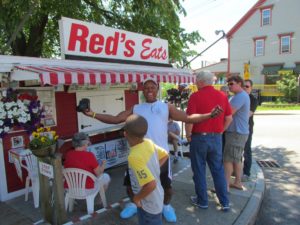 Finally, there are plenty of places to get lobster rolls in Maine and all of them are pretty good, but Red’s Eats in Wiscasset on the Back River not far from Bath, ME, has created a brand that brings customers by the hundreds to stand in line for their lobster rolls (a pound of meat in every roll is the brand promise) and fried clams, served out of a small, food trailer right on US1 and the bridge over the river. Across the street is a lovely restaurant with A/C and windows facing the river. On a Sunday, there’s no wait for a table, but across the street the crowd at Red’s is testimony to a brand that brings them in from all over and bring them back again for more. The list can go on and I’m sure you have some small brands that have big-time loyalty near you. It’s all proof that the important factor in a successful brand is to determine a customer need that other similar products or services don’t provide or provide as well, and then communicate that value in an honest, consistent manner in everything you do.
Finally, there are plenty of places to get lobster rolls in Maine and all of them are pretty good, but Red’s Eats in Wiscasset on the Back River not far from Bath, ME, has created a brand that brings customers by the hundreds to stand in line for their lobster rolls (a pound of meat in every roll is the brand promise) and fried clams, served out of a small, food trailer right on US1 and the bridge over the river. Across the street is a lovely restaurant with A/C and windows facing the river. On a Sunday, there’s no wait for a table, but across the street the crowd at Red’s is testimony to a brand that brings them in from all over and bring them back again for more. The list can go on and I’m sure you have some small brands that have big-time loyalty near you. It’s all proof that the important factor in a successful brand is to determine a customer need that other similar products or services don’t provide or provide as well, and then communicate that value in an honest, consistent manner in everything you do.
So, let’s raise a glass and toast the brands that may be small in size but big in loyalty…and success.
A GREAT BRAND STRATEGY-POORLY EXECUTED
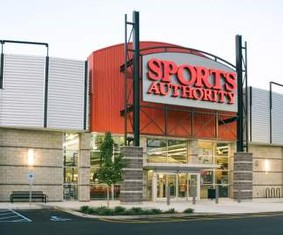
One of the last Sports Authority Stores
I was saddened—though not surprised—to read about the closing of The Sports Authority and its pending liquidation. While a letter from the CEO says that only 140 of the 463 stores would be shuttered now, public statements from the company’s attorneys and financial releases indicate that the company will soon disappear. The agreement (announced today) that the stores have been sold to a trio of liquidation firms confirms the fact that this once respected brand will soon be a memory.
As I said, I was saddened because about 20 years ago, I was offered the top marketing job at Sports Authority and except for what seemed to be a better offer (can’t tell a book by its cover) from Circuit City, I would have accepted the opportunity. I was impressed to say the least. Having just broken way from the grasp of Kmart (another brand in jeopardy now), Sports Authority had a lot of good things going for it at the time. A great brand name that personified its brand strategy. Well-merchandised stores that brought great selection at lower prices to categories that were booming at the time. Well-positioned locations that provided excellent traffic and visibility in well-targeted areas. A strong management team, led by the company’s founder, with a focused vision on where it wanted to go, also developed an effective marketing strategy that mixed great positioning with strong promotions. Plus, it was based near Ft. Lauderdale, just across the state from where I was living so commuting was possible until I got settled. I have to admit that when the Circuit City deal didn’t work out, I had a lot of second thoughts about that career decision!
Sports Authority Field at Mile High, Denver
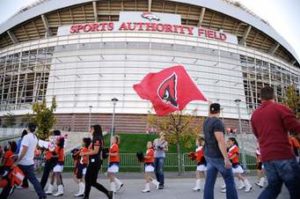
Sports Authority Field at Mile High, Denver
The company built itself on an effective positioning campaign using well produced, effective broadcast and timely promotions. More importantly, it had aggressively sought to have the Sport Authority logo placed in highly visible locations in sports venues in all major sports. Shots of the end zone for NFL, there was the logo. Sideline scorer’s table shots at NBA games, Sports Authority was right there. Baseball outfield walls, NHL boards, college stadiums—the company’s presence verified that it was the authority on sports gear. Even as the company grew and stumbled, its sale to Gart Sports in Denver seemed like another smart move. The company was consolidated in Denver and changed names to The Sports Authority since there was so much equity in the brand. Unfortunately, that’s where it ended.
The company’s marketing became dominated by nothing more than boring sale ads and promotions. It’s website was developed, yet not much more exciting than its print with little or no promotion driving customers online. More importantly, the stores were boring as well. Selections of athletic shoes were no better than most athletic footwear stores. Golf was sub-par to Golfsmith. Cycling failed to capitalize on the growth of this activity. Fishing was meager compared to Bass Pro and Cabela’s. Camping ditto. Traditional sports like baseball, football, tennis, soccer were not much better than Wal-Mart or Target. Then, there was the in-store experience. The only authority was on the sign outside the store. Sales help was disinterested and about as knowledgeable as your neighbor. Inventories were obviously being cut back and selection and sizes were insufficient to meet demand.
The stores in fact were boring. They did strike gold with buying the naming rights to the Denver Bronco’s stadium at Mile High just in time for the Super Bowl championship season, but by then it was too late. The brand had awareness but not much value.
Bass Pro Shops–Brandon, FL
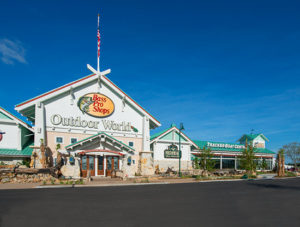 Before writing this article, I visited the newest Bass Pro Shop location in the Tampa Bay area and it was obvious why Sports Authority was fading fast. The Bass Pro shop was an exciting experience. Huge displays, interesting experiences, valuable in-store events. Then there is the selection from more fishing rods than I have ever seen to more cammo gear than in a military post. From boats to ACV’s and with a restaurant that’s worth making the trip just for the menu, Bass Pro gets it. And it’s always supported by an effective, on-target marketing campaign. Across the road was a new Dick’s Sporting goods and while not as over-powering as Bass Pro, it was everything that Sports Authority should have been but wasn’t even close. And Dick’s marketing is as good as Gatorade or Under Armor in creating a relevant, adifferentiated brand of stores.
Before writing this article, I visited the newest Bass Pro Shop location in the Tampa Bay area and it was obvious why Sports Authority was fading fast. The Bass Pro shop was an exciting experience. Huge displays, interesting experiences, valuable in-store events. Then there is the selection from more fishing rods than I have ever seen to more cammo gear than in a military post. From boats to ACV’s and with a restaurant that’s worth making the trip just for the menu, Bass Pro gets it. And it’s always supported by an effective, on-target marketing campaign. Across the road was a new Dick’s Sporting goods and while not as over-powering as Bass Pro, it was everything that Sports Authority should have been but wasn’t even close. And Dick’s marketing is as good as Gatorade or Under Armor in creating a relevant, adifferentiated brand of stores.
So, it’s strike three on Sports Authority and a good lesson learned that you have to consistently cover all the bases, outsmart the competition, and build a great team to keep a strong brand alive and well.
BRANDING BY UNDERSTANDING YOUR CUSTOMER
PRESS PLAY>>TO VIEW THIS MONTH’S VIDEO WELCOME MESSAGE
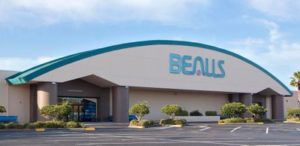 A few years ago, while spending some of my career on the advertising agency side of the business, I had the pleasure of working with the marketing people at Beall’s Department Stores in Bradenton, FL. The company had been in business for several years and had become of favorite shopping place for “mature” customers in Florida and Arizona by understanding who they were NOT trying to be. Beall’s (pronounced Bells) was not trying to be Macy’s, nor Kohl’s, nor JCPenney, nor Ross, nor TJMaxx. For that matter they weren’t trying to be just like any other stores competing with them in their select markets. The company understood the casual lifestyle of its customers. They understood that they were looking for a lower prices. They wanted quality brand names. They were no slaves to fashion. And they wanted a pleasant shopping experience at the store.
A few years ago, while spending some of my career on the advertising agency side of the business, I had the pleasure of working with the marketing people at Beall’s Department Stores in Bradenton, FL. The company had been in business for several years and had become of favorite shopping place for “mature” customers in Florida and Arizona by understanding who they were NOT trying to be. Beall’s (pronounced Bells) was not trying to be Macy’s, nor Kohl’s, nor JCPenney, nor Ross, nor TJMaxx. For that matter they weren’t trying to be just like any other stores competing with them in their select markets. The company understood the casual lifestyle of its customers. They understood that they were looking for a lower prices. They wanted quality brand names. They were no slaves to fashion. And they wanted a pleasant shopping experience at the store.
Well, it really seems to be working. Now with over 530 stores doing over a billion dollars in sales in relatively few markets, Beall’s recently opened a brand new store near me in Seminole, FL, so I decided to take a trip over to see it during its soft opening the week prior to its big Grand Opening. Not so soft. The lot was full. The stores were as crowded as any Black Friday experience I’ve had, and 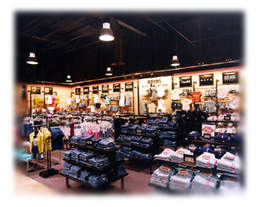 the registers were line up down the aisles with shoppers taking advantage of pretty much the same promotional offers that Beall’s offers regularly to its customers. The store was well organized and contemporary, but frankly not much different than the store that was demolished just 6 months earlier when the mall was torn down in favor of a new town center concept. Beall’s was the first to open this week. The store wasn’t exciting, and that’s the point. Beall’s brand isn’t necessarily exciting. It just works for the customers that they have targeted in over 100 years of doing business. Consistent, clean, well-merchandised, effective graphics all living up to the brand promise. A solid mixture of national brands like Columbia, Gloria Vanderbilt, Skechers and Dockers mixes well with Beall’s own Reel Legends, Guy Harvey, and Carribbean Joe.
the registers were line up down the aisles with shoppers taking advantage of pretty much the same promotional offers that Beall’s offers regularly to its customers. The store was well organized and contemporary, but frankly not much different than the store that was demolished just 6 months earlier when the mall was torn down in favor of a new town center concept. Beall’s was the first to open this week. The store wasn’t exciting, and that’s the point. Beall’s brand isn’t necessarily exciting. It just works for the customers that they have targeted in over 100 years of doing business. Consistent, clean, well-merchandised, effective graphics all living up to the brand promise. A solid mixture of national brands like Columbia, Gloria Vanderbilt, Skechers and Dockers mixes well with Beall’s own Reel Legends, Guy Harvey, and Carribbean Joe.
The company has recognized the value of the mature customer. Notice I did not say senior or retirees. While these demos are loyal shoppers, the styles and fashions fit a lifestyle more than a demographic. So young mothers are just as likely to be there next to a grandmother. I find there collection of sports and golf shirts as good as any around and better priced. Home décor and appliances are fit for the casual home but work well in the other 14 non-tropical states that the company operates in. That’s the point of brand—be consistent and understand what customers like about you more than the other stores offering similar merchandise. While the company has expanded to include an Outlet division and a robust online marketplace, the offerings and the commitment to the customer and the communities that they serve is consistent and one of the unique selling propositions that Beall’s has maintained steadfastly over the years. Simply put, they succeed by being themselves and doing it well. And the brand continues to succeed and grow.
BRANDING ISN’T ALWAYS FEEL GOOD MARKETING
This year marks the 12th year that I have been sharing views on branding, marketing, retailing, internet…and whatever else pops into my head as I scan the American marketplace for successful ideas on winning more loyal customers. During these years, I’ve talked about a lot of different types of businesses. Some are real success stories. Some have failed and have disappeared from view—never to be shopped or purchased again. Most of the time, I feature brand concepts that are communicated via outstanding creative executions that win over the hearts and minds of the customer as much as their wallets. To be sure it is the stories behind the brand strategy that make for memorable marketing and loyal customers.
This month, however, I’m featuring a retailer who has been a real success story, selling stuff that’s not very special, to people who just want what they need for a specific task at a really low price. There are no Addy Award winning campaigns here. Nor are the stores 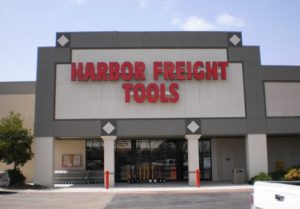 going to win any praises for design or emulation of graphics and displays. Just tools. Let’s take a look at one of my favorite stores—Harbor Freight (see http://harborfreight.com).
going to win any praises for design or emulation of graphics and displays. Just tools. Let’s take a look at one of my favorite stores—Harbor Freight (see http://harborfreight.com).
No, Harbor Freight isn’t special because yours truly is a great handyman or do-it-yourselfer. I found the store quite by accident when they opened near a Sushi restaurant that I used to visit frequently. I was surprised at how many things they sold that I had no idea what they were used for. Nor was I aware how many sizes and shapes of drill bits existed in this world. The stores are clean, neatly organized, well signed. The merchandise—most of which is private label product from China—is well displayed and designed. The prices–even for one who rarely shops for tools—are obviously deep discounted compared to Sears or Home Depot.
Then, there’s the advertising. Oy! Nothing special here. Except consistency. Always price promotions. Always a 20% discount. Always a free with purchase item or two that just happens to be something that you could really use (like a flashlight, or battery checker, or screwdriver set. The discounts are real. The sale periods are limited and enforced. The offers are everywhere. In the newspaper every week. In ValPak mailers. In direct mail catalogues. Online. In Parade magazine or tucked into the freestanding inserts. The graphics are not exciting but are consistent with the store. Well organized. Strong pricing statements. Easily understood discounts.
![]() The products are well made and tested in their own quality test labs called The Workshop (https://youtu.be/_xDFCBPQJXs?t=2)The warranties are real and the 100% Satisfaction promise is enforced. Returns are easy. The people are knowledgeable enough that you can find just what you need.
The products are well made and tested in their own quality test labs called The Workshop (https://youtu.be/_xDFCBPQJXs?t=2)The warranties are real and the 100% Satisfaction promise is enforced. Returns are easy. The people are knowledgeable enough that you can find just what you need.
And it all works. Harbor Freight now has over 600 (with a new one opening every 3 days) stores doing over $2 Billion in annual sales. In the process, they have built a brand that may have surpassed in loyalty the Craftsmen brand that led to Sears’ success over the years. I believe the brand has thrived because of the consistency of the message, the stores, and the product every day. Check out their About Us video on their website (after the typical sale ad on the home page) to hear a great example of a brand strategy and how they live up to it every day.
CHRISTMAS…THE BRAND
PRESS PLAY >> TO VIEW THIS MONTH’S MESSAGE FROM KEN.
MERRY CHRISTMAS. As we run off the days until Christmas, it seems like the holiday comes earlier and faster every year, and 2015 is no exception. Maybe it’s because there isn’t the significant change in weather down here in Florida so the days tend to be the same as they were in September and July and April. In any event, it’s time to get into the full-court press for us to make sure that we are ready for our favorite holiday. We did get a jump on a few things like the outdoor lights and Santas, setting up the tree and decorations and work on this month’s blog in advance. All done before we took off for a visit to the Christmas markets on the Rhine with stops in four countries and several cities to see how the holiday are celebrated in towns dating back to when Santa was just a young elf. Boy, were we surprised. Christmas is alive and well in Basel, Strasbourg, Mainz, Koblenz and Cologne.
 As we explored the various Christmas market festivals in each city, we were taken back into memories of how the holidays felt many years ago. We tried to figure out what made it so special and we came to the conclusion that Christmas in Europe is not just a holiday selling season, but it’s a time of celebration for the entire community and all of the businesses (not just the retailers) go all out to show their celebration of the holiday. No political correctness here. This is Christmas with Nativity scenes, Santa Clauses, angels, and all of the other symbols. But most obvious is the happy faces of the people—whether they were visiting the markets or whether they were working the various businesses. It was a festival atmosphere and yet it was calming (“All is calm…”) and heartwarming. Yes, many of the booths in the Christmas markets sell the same items as those in other cities. Yet, there is enough local flavor to give each one its own personality and style. Sure there were special prices, but it didn’t seem like prices and sales were the key focus. The displays—whether in a small, cold hut or in a centuries-old building were as exciting as any that I’ve seen on Fifth Avenue. The crowds were there on Wednesday morning just like they were most evenings and on the weekends where families, seniors, and youth mingled and enjoyed the atmosphere and the offerings. There were women in burkas, men wearing yarmulkes, priests, and even some tourists! Everyone enjoying the special time of year.
As we explored the various Christmas market festivals in each city, we were taken back into memories of how the holidays felt many years ago. We tried to figure out what made it so special and we came to the conclusion that Christmas in Europe is not just a holiday selling season, but it’s a time of celebration for the entire community and all of the businesses (not just the retailers) go all out to show their celebration of the holiday. No political correctness here. This is Christmas with Nativity scenes, Santa Clauses, angels, and all of the other symbols. But most obvious is the happy faces of the people—whether they were visiting the markets or whether they were working the various businesses. It was a festival atmosphere and yet it was calming (“All is calm…”) and heartwarming. Yes, many of the booths in the Christmas markets sell the same items as those in other cities. Yet, there is enough local flavor to give each one its own personality and style. Sure there were special prices, but it didn’t seem like prices and sales were the key focus. The displays—whether in a small, cold hut or in a centuries-old building were as exciting as any that I’ve seen on Fifth Avenue. The crowds were there on Wednesday morning just like they were most evenings and on the weekends where families, seniors, and youth mingled and enjoyed the atmosphere and the offerings. There were women in burkas, men wearing yarmulkes, priests, and even some tourists! Everyone enjoying the special time of year.
Christmas season surely is the biggest sales period in retail all over the world and as such the brand of this season certainly needs to  constantly be refined while sticking to the reasons for the season that make it special. It’s not all about black Friday prices and one-day sales. It’s a celebration and a time for special memories. Standing in line in one of the many Kathe Wohlfahrt Christmas stores (you’ve got to experience one of these!) I had the same feeling that I had each Christmas when my mother would load me and my brothers on the Detroit streetcars to go to Hudson’s Downtown department store. This was not just a shopping trip. It was an excursion into the North Pole and Bethlehem and New York all wrapped up in one. An exciting, memorable time and shopping was just a sidelight to a tradition that I’ll always remember. That’s what the brand of Christmas is all about when it comes to retail. The marketing should reflect this attitude of a special time of year. The stores should dress themselves up more with experience and less on sale signs. The people serving you should be as excited as you are about the season and the experience. The community should continue to make living there extra special at this time and give people a reason to come out and share the experience.
constantly be refined while sticking to the reasons for the season that make it special. It’s not all about black Friday prices and one-day sales. It’s a celebration and a time for special memories. Standing in line in one of the many Kathe Wohlfahrt Christmas stores (you’ve got to experience one of these!) I had the same feeling that I had each Christmas when my mother would load me and my brothers on the Detroit streetcars to go to Hudson’s Downtown department store. This was not just a shopping trip. It was an excursion into the North Pole and Bethlehem and New York all wrapped up in one. An exciting, memorable time and shopping was just a sidelight to a tradition that I’ll always remember. That’s what the brand of Christmas is all about when it comes to retail. The marketing should reflect this attitude of a special time of year. The stores should dress themselves up more with experience and less on sale signs. The people serving you should be as excited as you are about the season and the experience. The community should continue to make living there extra special at this time and give people a reason to come out and share the experience.
 So, if you’re dreading the last few days of the Christmas rush, take a few minutes to think back what made this holiday so special when you were young. Think about the brand of Christmas and why this time of year is not only a time for revenues and promotions, but also a time for experiences and memories. If you’re one of the marketers trying to take advantage of the season, make it special for your customers by going the extra mile to make it a memorable experience. If you’re a customer, enjoy the experience and enjoy your families.
So, if you’re dreading the last few days of the Christmas rush, take a few minutes to think back what made this holiday so special when you were young. Think about the brand of Christmas and why this time of year is not only a time for revenues and promotions, but also a time for experiences and memories. If you’re one of the marketers trying to take advantage of the season, make it special for your customers by going the extra mile to make it a memorable experience. If you’re a customer, enjoy the experience and enjoy your families.
Have a great Christmas and Happy New Year.
THE BRAND TO END BLACK FRIDAYS!
Press Play>>> to view Ken’s welcome message for this month.
Happy Thanksgiving. Hope you have a peaceful, family-oriented holiday and have chosen (as I have) to ignore Black Friday. Despite the billions of ad messages for everything from SUV’s to CPU’s with special Black Friday sale prices, I believe this retail phenomenon is fading fast in customer appeal. There are many reasons for it. Mostly that customers have figured out that they can get as good if not better discounts prior to the Friday after Thanksgiving (as we used to call it in my department store days) or almost any day prior to Christmas as just about any store of their choosing. But I think there’s another factor that’s contributing to the demise as they say in Germany of“Freitag Schwarz” (I’m going to cruise the Rhine next week so I thought I should practice my Deutsch in advance.). That factor is Amazon!
 As an article recently in the New York Times pointed out, Amazon is far outpacing its competitors by building a “retail” operation that nobody can effectively compete with, especially at this time of year. Amazon’s stock performance (double in value) this year has outpaced the rest of the market. The big reason is that after years of development and investment in technology and logistics, Amazon works! It struck me as I saw the ads for Macy’s “Believe” campaign which I still think captures the spirit that made department store the Christmas headquarters for shopping several years ago. I also watched the promotions for the Macy’s Thanksgiving Day parade that has been a tradition at our household for viewing for as long as I can remember. What struck me is that I hadn’t been in Macy’s—or any other department store– for at least a year and certainly hadn’t purchased anything at the stores for even longer. However, our family has made at least 50 purchases from Amazon (and Amazon Prime) this year. Everything from swimming pool pumps to water filters to books to videos to shoes to toys…and I could go on. And to top it all off, we had almost all of the items delivered at no cost, to our front door, the next day. And…at prices that beat most Black Friday deals this week.
As an article recently in the New York Times pointed out, Amazon is far outpacing its competitors by building a “retail” operation that nobody can effectively compete with, especially at this time of year. Amazon’s stock performance (double in value) this year has outpaced the rest of the market. The big reason is that after years of development and investment in technology and logistics, Amazon works! It struck me as I saw the ads for Macy’s “Believe” campaign which I still think captures the spirit that made department store the Christmas headquarters for shopping several years ago. I also watched the promotions for the Macy’s Thanksgiving Day parade that has been a tradition at our household for viewing for as long as I can remember. What struck me is that I hadn’t been in Macy’s—or any other department store– for at least a year and certainly hadn’t purchased anything at the stores for even longer. However, our family has made at least 50 purchases from Amazon (and Amazon Prime) this year. Everything from swimming pool pumps to water filters to books to videos to shoes to toys…and I could go on. And to top it all off, we had almost all of the items delivered at no cost, to our front door, the next day. And…at prices that beat most Black Friday deals this week.
It’s no surprise why Amazon’s retail sales more than doubled in the last quarter, twice the growth of Wal-Mart who does a far better job of merchandising than all of the department stores put together. Why is this happening? No surprise here either. It’s all about branding. The Amazon brand has gone far beyond the bookstore brand that gave Amazon its beginning several years ago. But the brand goes beyond just expanding what you can buy at Amazon, it’s the way they have developed a relationship with its customers and in the  process developed a brand that resonates with so many customers today. That relationship is strengthened by the “personal” communication that out performs even the best of the traditional holiday gift stores. First, with a website that makes it so easy to find what you want, when you want, at a great price. Next with a CRM program called Amazon Prime that for an annual fee of $99 you can get free delivery, usually next day, with one click on your keyboard. You’ll get order status, shipping status, delivery status (even from the USPS), and a liberal return policy just in case you order the wrong size or color. Oh, and the return is just as easy to make. Want to watch a TV series that you missed on primetime? Prime video makes it easy to watch as simply as Netflix or Apple TV…and it’s usually free to download. Want to see if other people have purchased this product and were satisfied? Amazon’s customer rating system is comprehensive and validated so well it’s like calling a good friend who bought the product and is ready to recommend or suggest alternate items. I could go on, but these are just a few reasons why Prime now has over 40 million subscribers and growing every day (Black or not) before the holiday shopping season is over. Click on this linkview a great TV spot for Amazon Prime that really supports the brand. https://youtu.be/RpW3lfKKxPc
process developed a brand that resonates with so many customers today. That relationship is strengthened by the “personal” communication that out performs even the best of the traditional holiday gift stores. First, with a website that makes it so easy to find what you want, when you want, at a great price. Next with a CRM program called Amazon Prime that for an annual fee of $99 you can get free delivery, usually next day, with one click on your keyboard. You’ll get order status, shipping status, delivery status (even from the USPS), and a liberal return policy just in case you order the wrong size or color. Oh, and the return is just as easy to make. Want to watch a TV series that you missed on primetime? Prime video makes it easy to watch as simply as Netflix or Apple TV…and it’s usually free to download. Want to see if other people have purchased this product and were satisfied? Amazon’s customer rating system is comprehensive and validated so well it’s like calling a good friend who bought the product and is ready to recommend or suggest alternate items. I could go on, but these are just a few reasons why Prime now has over 40 million subscribers and growing every day (Black or not) before the holiday shopping season is over. Click on this linkview a great TV spot for Amazon Prime that really supports the brand. https://youtu.be/RpW3lfKKxPc
Amazon is a brand that lives up to its promise and exceeds customer expectations at every transaction. It’s communications are more personal than…. well, real persons. And it’s growing in brand preference at lightning speed that will keep the competition far behind for many Black Friday’s to come.
Hope you have a great Thanksgiving and a peaceful Christmas season.
TRUST ME TO BE YOUR FAVORITE BRAND
Click on PLAY>>>above to view Ken’s welcome video to this month’s blog..
I just read an article detailing the value of the country’s leading brands indicating that not only is a brand important to the marketing of a product or service but it’s also an important component of the company’s total value on the investment markets. SAB Miller just turned down a $104 Billion offer from Anheuser-Busch in Bev, stating that the offer greatly undervalues the company and attributing its value to the strong brands in its portfolio of beers. As important as the brand is, it’s amazing what some major companies do to jeopardize the strength and even the viability of their brands with some deceitful practices.
 This is painfully obvious in the current situation at Volkswagen and Audi where the company purposefully altered the software to deceive the regulators of their emissions control testing. So the CEO of VW has resigned, but the lack of trust will linger with the customers long after he is forgotten. One of the key criteria in building a successful brand is the development of trust with the customer. In this case that their vehicles are not polluting the environment is the end result. More important, however, is the fact that we, as drivers of their vehicles, must have trust in the workmanship and safety of the cars, as a basis for considering a purchase of their brands.
This is painfully obvious in the current situation at Volkswagen and Audi where the company purposefully altered the software to deceive the regulators of their emissions control testing. So the CEO of VW has resigned, but the lack of trust will linger with the customers long after he is forgotten. One of the key criteria in building a successful brand is the development of trust with the customer. In this case that their vehicles are not polluting the environment is the end result. More important, however, is the fact that we, as drivers of their vehicles, must have trust in the workmanship and safety of the cars, as a basis for considering a purchase of their brands. 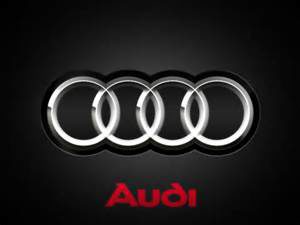 While the recent infractions would not likely cause injury or damage to the customer or their vehicle, it certainly deteriorates the TRUST that we place that their car is going to run reliably and more important drive safely on today’s high-speed thoroughfares and in all kinds of weather conditions.
While the recent infractions would not likely cause injury or damage to the customer or their vehicle, it certainly deteriorates the TRUST that we place that their car is going to run reliably and more important drive safely on today’s high-speed thoroughfares and in all kinds of weather conditions.
The brand strategy that I have championed for several years requires a company and its associates to “live up to the brand everyday”. Otherwise, all the great marketing and promotions are worthless as purchasers become disgruntled and share their negative experiences with their friends, family and the media. To those who were considering changing brands, these covert actions only convince the customer to stick with their existing brand or go elsewhere to a brand they can trust. Just prior to this scandal, VW became the largest auto producer in the world and it has become that by producing cars (since I owned my first beetle back in the 60’s) that were dependable and a great value.
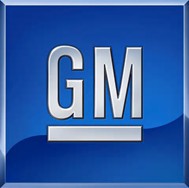
General Motors was also the largest automaker in the world and it chose to deceive their customers with unsafe airbags and other hidden recalls that nearly made the company go broke just a few years ago. GM had worked hard to build a quality image not only for the company but also for the US auto industry. Instead, it jeopardized its existence and helped companies like VW and Toyota surpass them in revenues and market share.
 Car selling for years has been based on deceit with loads of fine print, bait and switch tactics, and high-pressure sales policies at the dealer level. I’m currently being bombarded in the Tampa Bay market with commercials from a new Fuccillo KIA dealer in the area. The dealer’s owner fits the stereotype of your Uncle Billy from Jersey City who yells at the view that his deals and promotions are going to be “Huuuuggggee” along with his partner Caroline whose lines are consistently trampled by Billy while they talk about free trips and electronics to prompt a trip to their dealership. In fairness, they have created quite a media presence in a short period. And, the company owns high-volume dealerships all over the country with Billy’s tried and not-so-true tactics. We’ve grown accustomed to dealers’ tactics like this and that’s why customers dislike the whole auto purchasing experience. Unfortunately, no one trusts the dealer to give them the best deal and to live up to their promises after the sale.
Car selling for years has been based on deceit with loads of fine print, bait and switch tactics, and high-pressure sales policies at the dealer level. I’m currently being bombarded in the Tampa Bay market with commercials from a new Fuccillo KIA dealer in the area. The dealer’s owner fits the stereotype of your Uncle Billy from Jersey City who yells at the view that his deals and promotions are going to be “Huuuuggggee” along with his partner Caroline whose lines are consistently trampled by Billy while they talk about free trips and electronics to prompt a trip to their dealership. In fairness, they have created quite a media presence in a short period. And, the company owns high-volume dealerships all over the country with Billy’s tried and not-so-true tactics. We’ve grown accustomed to dealers’ tactics like this and that’s why customers dislike the whole auto purchasing experience. Unfortunately, no one trusts the dealer to give them the best deal and to live up to their promises after the sale.
What can we expect? If the parent corporations were lying and deceiving, why wouldn’t their authorized dealerships do the same? The key to building a brand that the customer values is building their trust at the same time. With out trust, the brands will likely underachieve and may soon perish.
MALLS: DEATH OF A RETAIL BRAND
Click on PLAY>>>above to view Ken’s welcome video to this month’s blog.
I returned recently from a trip to California and on the drive home, I was surprised to see that our local mall had been reduced to a pile of rubble while we were out of town. There still remained some signs and the main entrance portal but most of it and the adjoining theater had met their match with bulldozers and wrecking balls. Of course, this really didn’t happen in the week that we were away. The mall’s closing started several years ago as store after store began closing and the crowds that used to populate the court and restaurants got smaller and smaller. In the meantime, downtown shopping areas in cities big and small are beginning to thrive thanks to a change in customer attitudes toward shopping in a town center atmosphere where you can park in front of the store and so in or wander up and down the streets as was the custom many years ago.
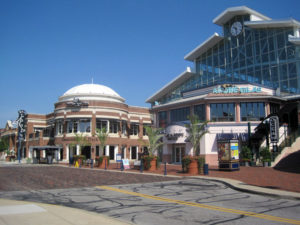
Easton Town Center, Columbus
I realized recently that in just a five-mile radius of my home three major shopping malls had closed and been torn down in the past 3-4 years. Replaced by power centers where customers can park in front of their destination and get in/out quickly or visit one of the several restaurants (from fine dining to casual) that also drive traffic to the area. The same holds true around the country, where new shopping “centers” like Eaton Town Center in Columbus or Mooresville, NC, attract new stores, restaurants and people every day. The customers have changed the way they shop. Some might say they have just gotten back to way our parents shopped. Major cities are discovering that rebuilding and refurbishing downtown areas has great appeal to younger shoppers and these have become hubs of activity around the country. Developers and retailers realized this and have profited well in the new (old?) environments. Department stores on the other hand still are tied like “anchors” to the traditional mall locations. No wonder they continue to be challenged.
It all starts with continuing to monitor the customer attitudes and behaviors and adjusting the plans accordingly. These new town centers are a brand within themselves and the customers love the results. The same holds true in other industries and product categories. Take photo taking for example. The arrival of digital was not unpredicted. Once this category was one of the most profitable in consumer products and services and retailers took advantage of the higher margins and multiple shopping trips to build traffic to their
stores. Kodak recognized this early on and was one of the first to introduce affordable digital cameras and an online service to save and edit your new digital photos. However, with such a history and profit model tied in to film and developing, the company struggled to keep up with the fast changing world of photography. This opened the door for new brands like Shutterfly and Snapfish to provide exciting photo services and products online that not only encouraged more photo taking by customers but also gave them new ideas on how to enjoy the pictures long after the event. Most retailers now offer these services online and it’s not surprising that the online photo sites look amazingly like Shutterfly’s site. (In fact, they provide the service tot the stores in a turnkey fashion, while still providing the traffic building option of in-store pickup.
Just as Facebook and Instagram have made photos a part of our communications, Shutterfly provides new ways to keep your photos alive and visible in everything from photo books to tee shirts to blankets. Meanwhile, Kodak digital cameras are almost non-existent on the shelves of most retailers, their Easy Share program has disappeared, and the company continues to fade.
It all starts with the customer and keeping in touch with them. Then refining and building a brand strategy that takes advantage of the changes in attitudes and behaviors. The regional malls aren’t as easy to move away from and many have added “restaurant rows” to generate more of a town center feeling. But aside from a place for teens to hang out at, or an air-conditioned walking track for many seniors for their morning exercise, their reason for being has faded. When the first malls appeared in my hometown of Detroit, the primary benefit was a warm place to shop in the winter. Here in Florida, it was a cool place to shop to get away from the hot sun and humidity. Customers don’t seem to value these benefits as much any more. They want an interesting, convenient place to shop and a brand that meets their needs of today.
